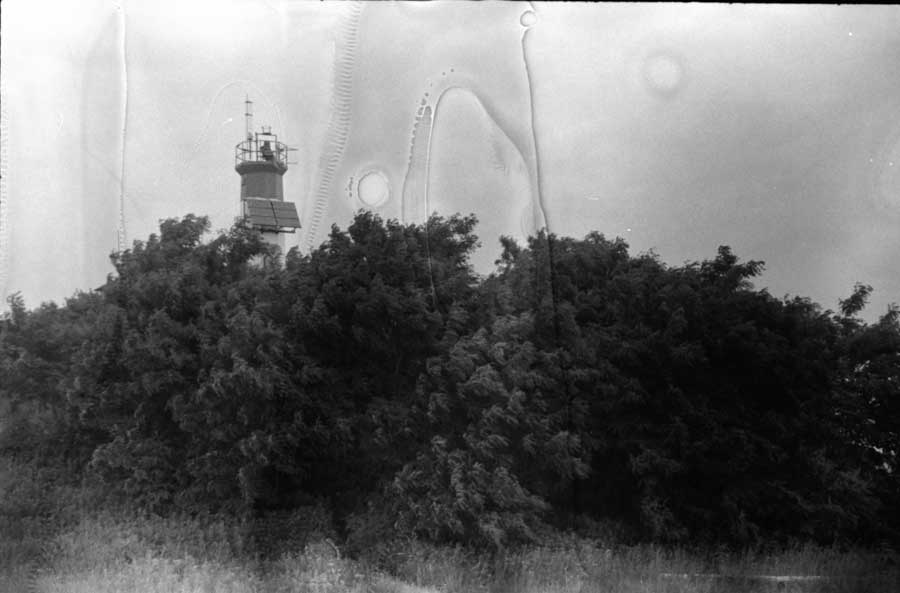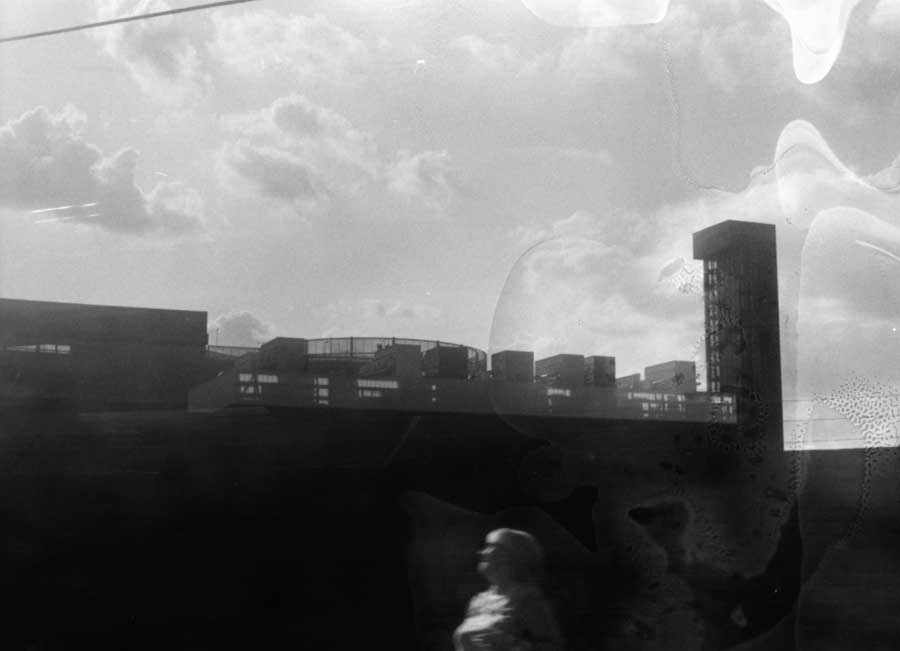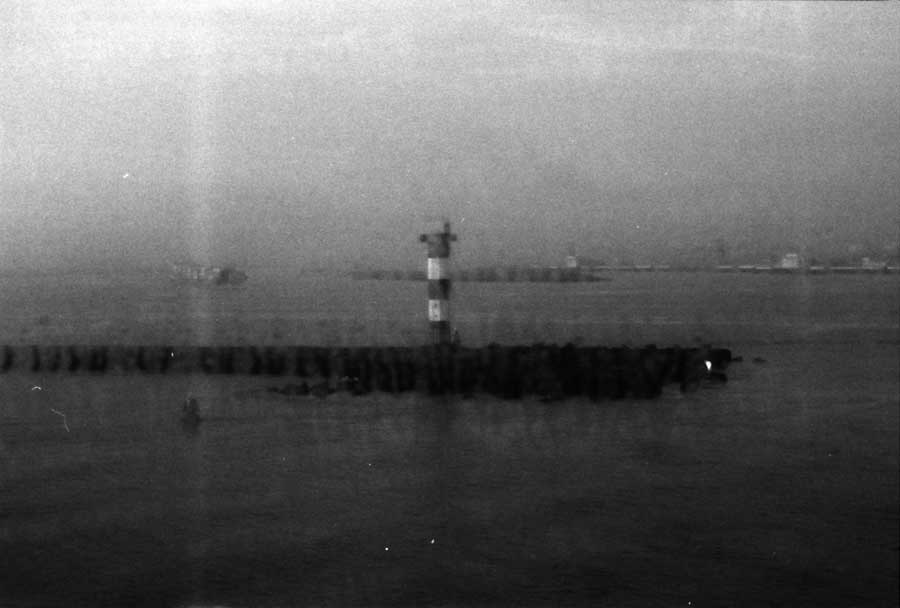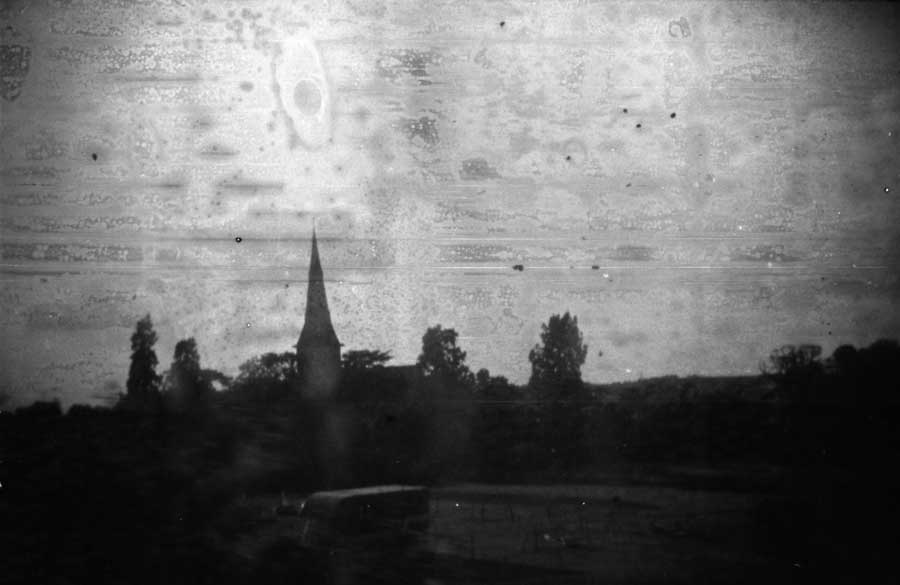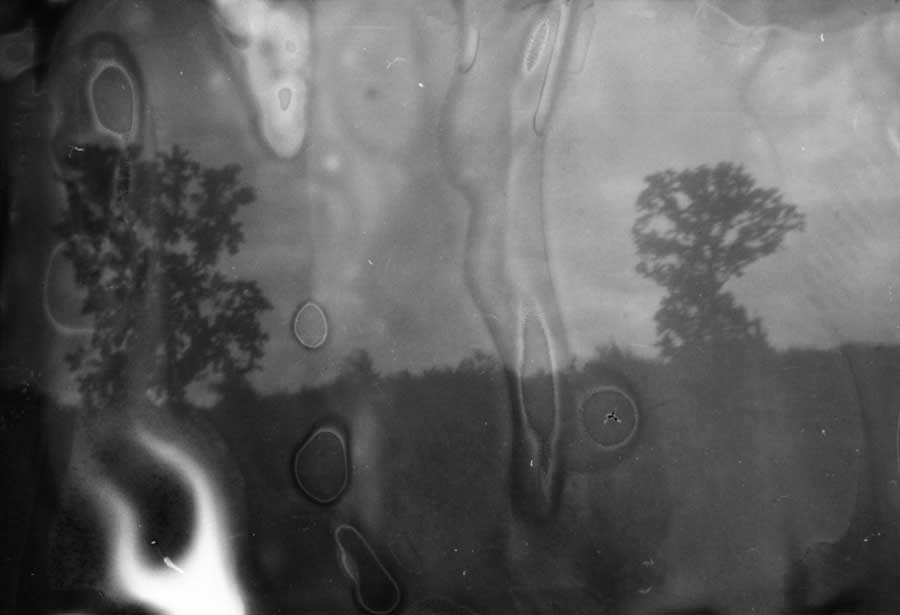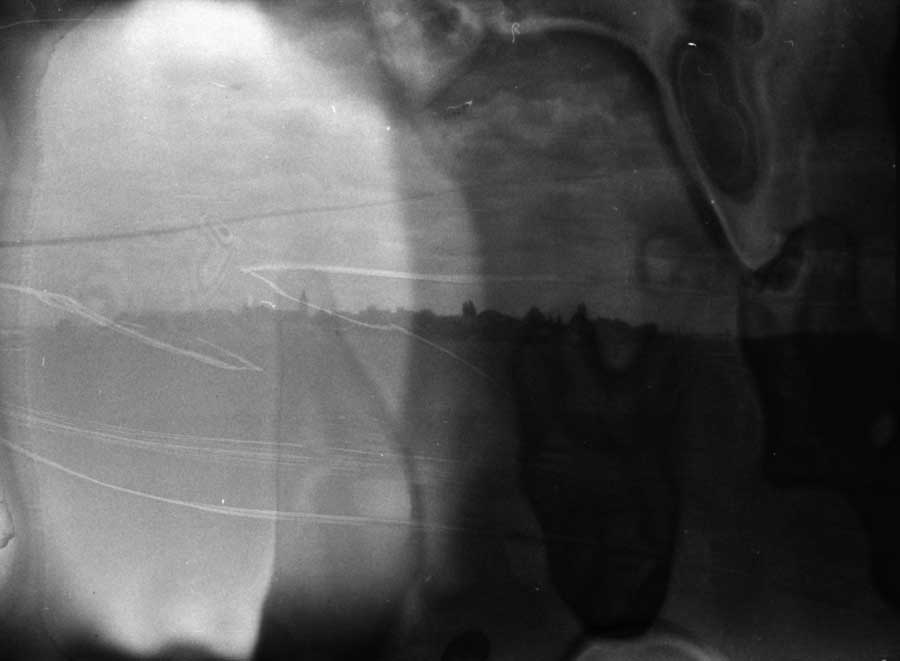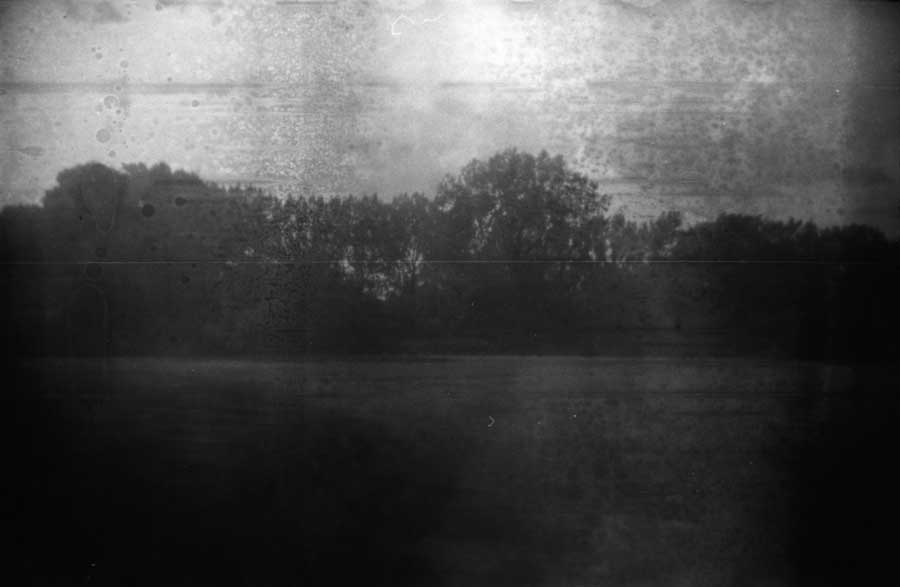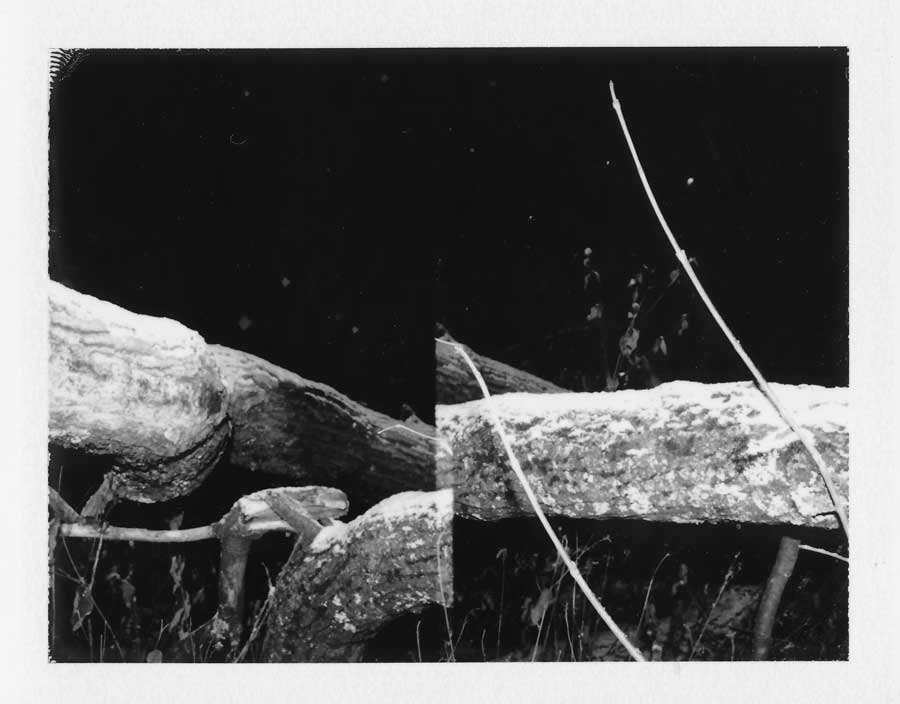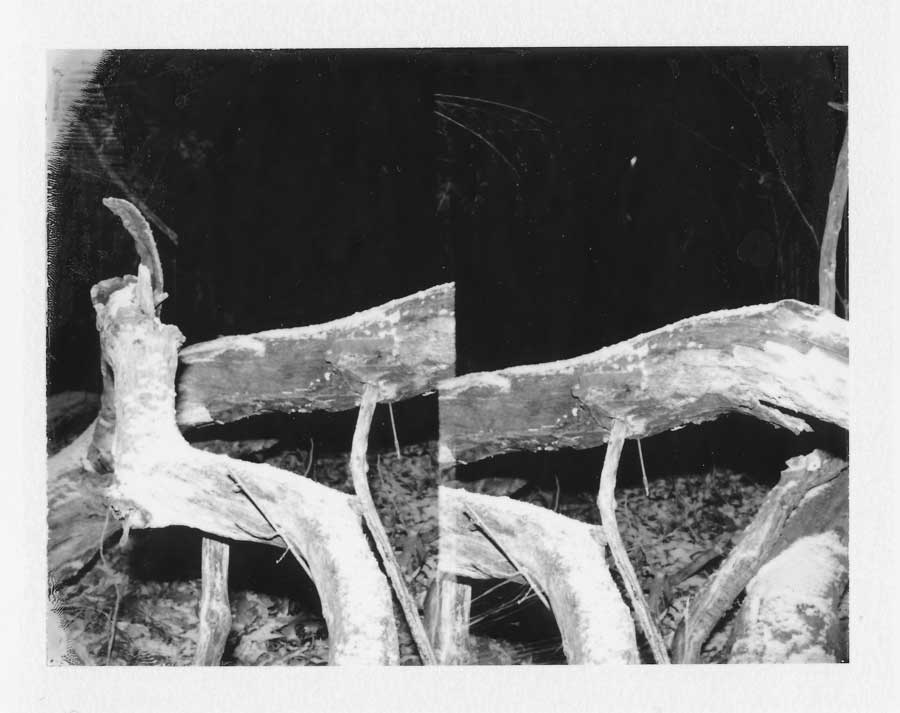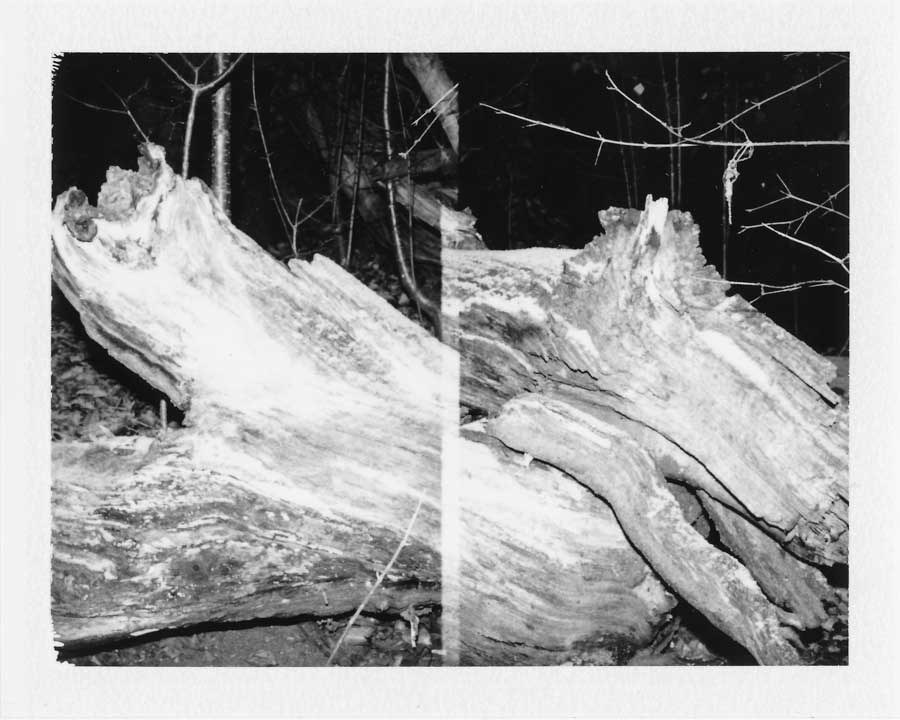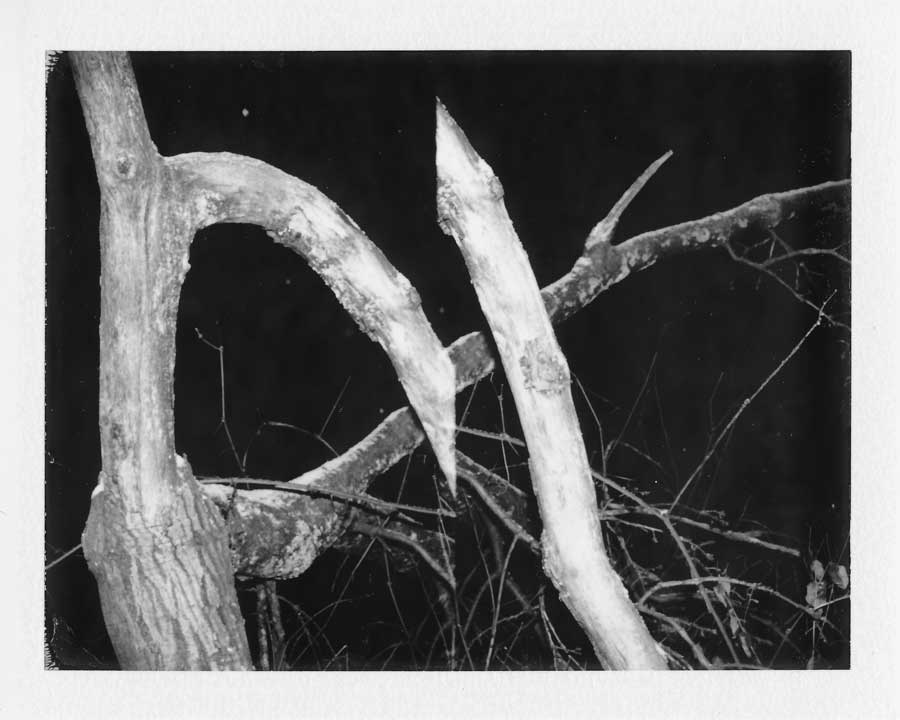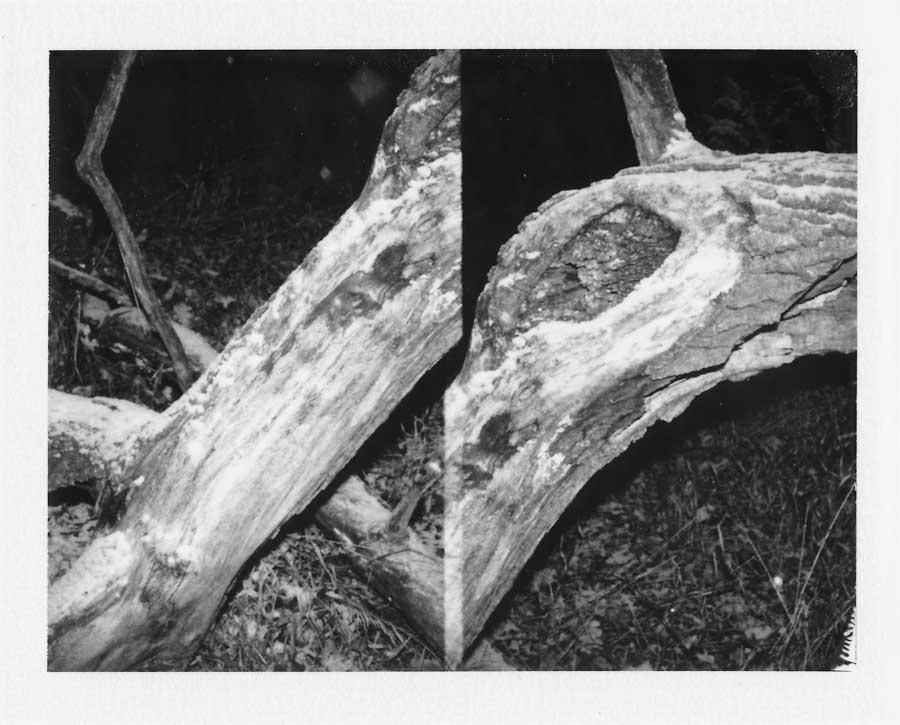This is a collection of work from 2014 that was taken in Europe and Canada. They are from various projects consisting of an overarching theme of soft darkness and absence, with the relationship between humanity and nature also being explored.
They play with photographic use of time and what it means to be able to change it. The landscapes are from a trip to Europe whereby the exposed rolls were soaked in various homemade solutions to damage the film. This gives the image a morbid and abstracted look.
The process is fairly random and results can never be predicted. The shadow photographs concentrate on form and composition. The shadows are the only subject and therefore must be precisely composed to create an interesting image. The two double exposure images are from the series ‘Latent’ in which a roll containing scenic shots of Europe was double exposed with images shot in a local car park. The result was a conformation of the rough natural shapes of the landscapes together with the sharp geometric lines of the concrete. Though quite removed from each other, these two elements come together to form odd yet interesting images. Lastly, the images with the white borders are from a series called ‘Forms in Nature’ and actually flatbed scans of Polaroid pictures. They were shot using a Polaroid passport camera which has two lenses, allowing for two separate images on the same picture. This was used as a very basic image splicing technique, using the forms found in nature and splicing them together in disjointed ways. These images explore patterns found in nature, namely that of lines in wood formations. Overall the images together explore the relationship between humanity and nature, with a listless sense of time. This relationship can be seen with natural and artificial elements in the same frame, both of those elements lapping over each other, or the evidence of artificial tampering in purely scenic images. This relationship is always present, as we see nature with our urban perspective and it’s one that can never leave us. The idea of time, both physically and philosophically is one that is played with. They could resemble very old photographs, yet they are not. But they are still of scenes in the past; after all, no image can be truly present. So this idea of absence is played with, questioning if the date of when a scene is captured is all that important. Photography allows for playful and/or serious tampering with this. Whether its emotions or memories, time will always play a central role in these experiences. It is something that most take for granted, yet almost nothing is known about it. It is fundamentally a very mysterious thing. All the images were shot with film and analogue processes. This allows for less exact control, but a greater range of broad control over the image. General aspects are controlled, like exposure, focus, and composition, but the exactness of how tones are represented is fundamentally controlled by random chemical reactions. Other events may also inexplicably change the image. This lack of total control is important in the digital age where exactness and control seem all the too important, yet we are fundamentally at the influence of nature because we are products of it. It represents a balance in the modern world, where the new and old exist in harmony, and in turn allowing for the optimum experience of it. It allows one to truly live in the present, to experience the experience as is really is. Photography, the tool of absence, becomes essential for one to be present. [Official Website]



